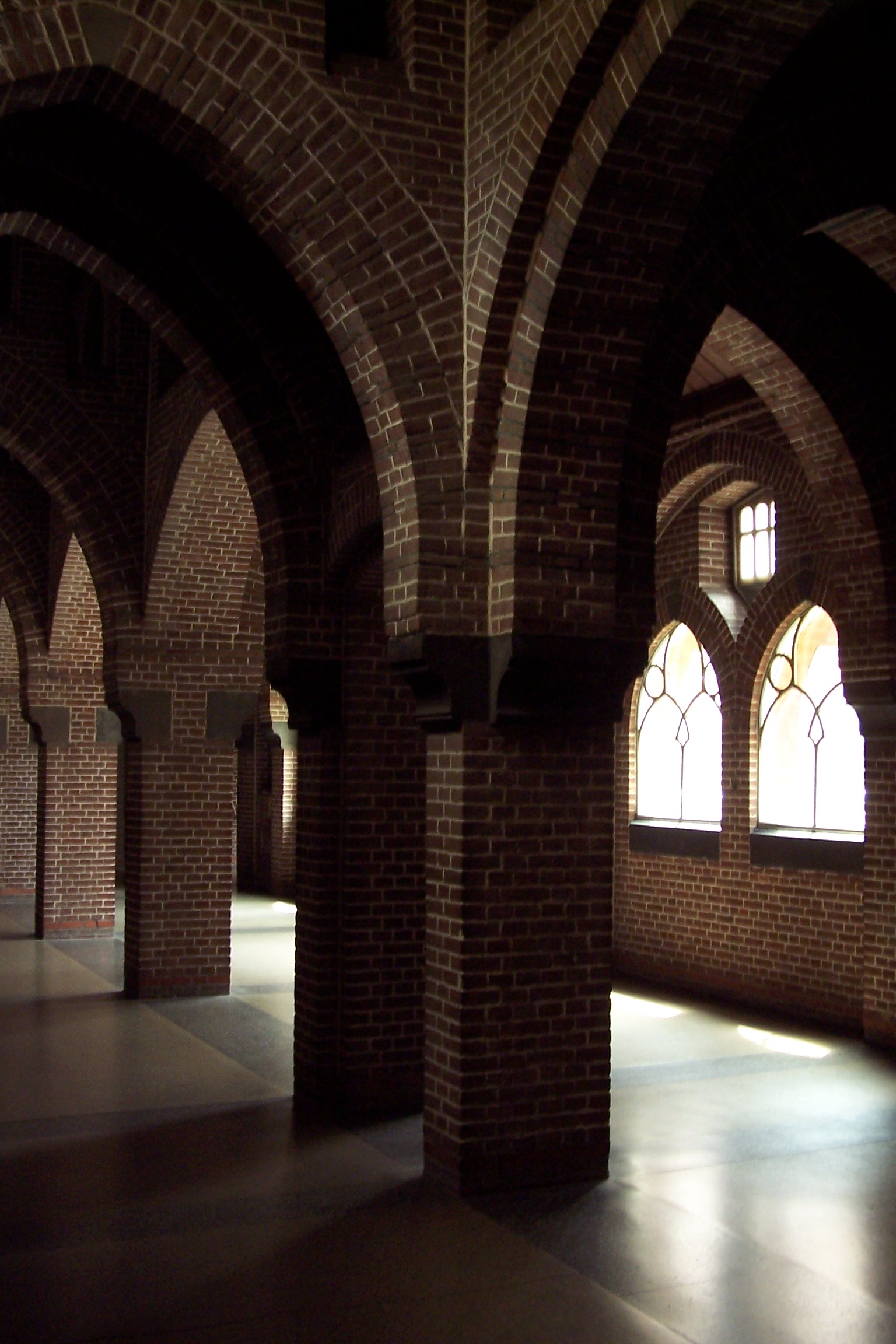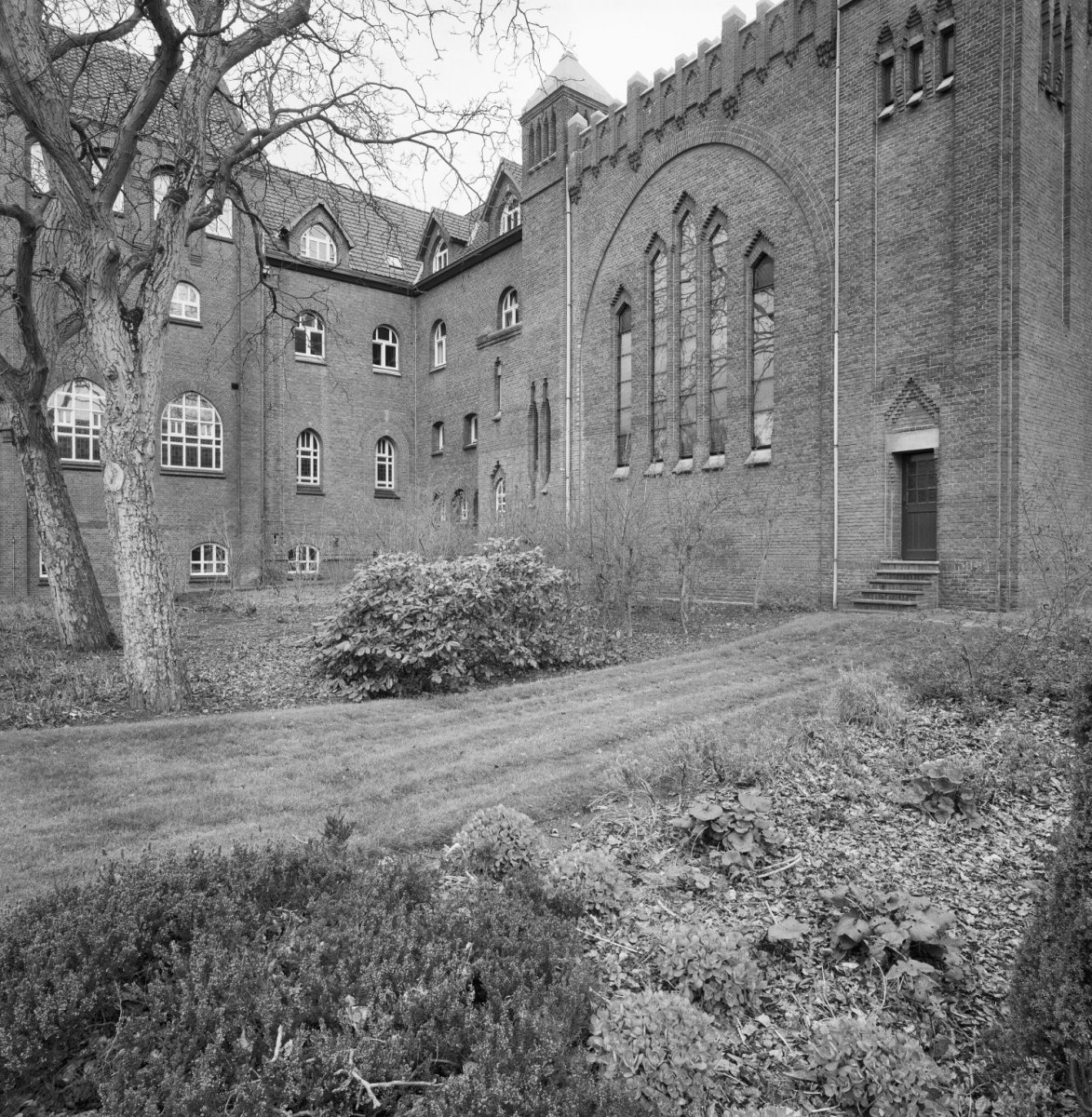St. Paul's Abbey, Oosterhout on:
[Wikipedia]
[Google]
[Amazon]

 St. Paul's Abbey, Oosterhout, also Oosterhout Abbey ( nl, Sint-Paulusabdij) is a former Benedictine abbey in Oosterhout, North Brabant, the Netherlands.
St. Paul's Abbey, Oosterhout, also Oosterhout Abbey ( nl, Sint-Paulusabdij) is a former Benedictine abbey in Oosterhout, North Brabant, the Netherlands.
 After World War II there were many new entrants and this made possible the foundations of
After World War II there were many new entrants and this made possible the foundations of
Sint-Paulusabdij on CheminNeuf.nl website
Geschiedenis van de St. Paulusabdij
(history of the abbey)
Rijksdienst voor het Cultureel Erfgoed: Monumentenregister
{{DEFAULTSORT:Saint Paul's Abbey, Oosterhout 1907 establishments in the Netherlands Christian organizations established in 1907 2006 disestablishments in the Netherlands Organizations disestablished in 2006 Former Christian monasteries in the Netherlands Benedictine monasteries in the Netherlands Christian monasteries in North Brabant Rijksmonuments in North Brabant Oosterhout Paul Bellot buildings Roman Catholic churches completed in 1907 20th-century Roman Catholic church buildings in the Netherlands
 St. Paul's Abbey, Oosterhout, also Oosterhout Abbey ( nl, Sint-Paulusabdij) is a former Benedictine abbey in Oosterhout, North Brabant, the Netherlands.
St. Paul's Abbey, Oosterhout, also Oosterhout Abbey ( nl, Sint-Paulusabdij) is a former Benedictine abbey in Oosterhout, North Brabant, the Netherlands.
History
St. Paul's Abbey was founded by monks from Wisques Abbey in Wisques in thePas-de-Calais
Pas-de-Calais (, " strait of Calais"; pcd, Pas-Calés; also nl, Nauw van Kales) is a department in northern France named after the French designation of the Strait of Dover, which it borders. It has the most communes of all the departments ...
who were forced to leave France by the anticlerical policies and popular feeling of the period. The community settled initially in Belgium, at first in Honnay
Honnay ( wa, Onai) is a village in Wallonia and a district of the municipality of Beauraing, located in the province of Namur, Belgium.
The village has been settled at least since Roman times. From 1115, it belonged to the Prince-Bishopric of Li ...
and later in Montignies-Saint-Christophe. The Benedictine nuns of Wisques had already settled in Oosterhout in the ''Onze-Lieve-Vrouweabdij'' ( Abbey of Our Lady, Oosterhout) and the abbot of Solesmes wanted both communities close to each other in the same town. The monks therefore bought 2 hectares of land nearby but had difficulties with the Dutch architect who was working for the nuns. Eventually the new priory was built under the supervision of the architect Dom Bellot, and proved to be a masterpiece of brick architecture, as well as the architect's first great work. The building was finished in 1907 and the community was raised to the status of an abbey in 1910. Dom Jean de Puniet was the first abbot.
After 1918 the monks were able to return to France if they wished but not all did so, and a number of Dutch monks by that time had joined the community. In the end the restored community at Wisques from 1920 numbered about 30 monks and became a priory under the supervision of Oosterhout. In 1928 Oosterhout and Wisques became independent abbeys belonging to the Benedictine Solesmes Congregation. In 1922 the writer Frederik van Eeden
Frederik Willem van Eeden (3 April 1860, Haarlem – 16 June 1932, Bussum) was a late 19th-century and early 20th-century Dutch writer and psychiatrist. He was a leading member of the Tachtigers and the Significs Group, and had top billing a ...
was baptised in this abbey after his conversion.
The monks of Oosterhout remained largely French, including the abbot, but Dutch monks entered in increasing numbers and by 1941 the community consisted of about 100. The abbey businesses also flourished: a farm, poultry-raising, an orchid nursery, a pottery, icon painting and the restoration of artworks. They also specialised in historical and liturgical research.
On land which the abbey had bought in 1908 in Egmond-Binnen, the architect Alexander Kropholler
Alexander is a male given name. The most prominent bearer of the name is Alexander the Great, the king of the Ancient Greek kingdom of Macedonia who created one of the largest empires in ancient history.
Variants listed here are Aleksandar, Al ...
was commissioned in 1929 to build a monastery, St. Adelbert's Abbey, declared a priory in 1936.
After the death of Dom de Puniet in 1941 a Dutch abbot was elected, Dom Mähler.
In 1930 the chapter room was built, with Hans van der Laan
Dom Hans van der Laan (29 December 1904 – 19 August 1991) was a Dutch Benedictine monk and architect.
He was a leading figure in the Bossche School. His theories on numerical ratios in architecture, in particular regarding the plastic number, ...
as architect. Together with Nico van der Laan
Nico van der Laan (25 August 1908 – 20 September 1986) was a Dutch architect, as were his father Leo van der Laan and his brothers Jan and Hans, with whom he was closely associated.
Life and work
Nico van der Laan was born in Leiden, son o ...
he also designed the guest house. This was the first work on the basis of the architectural numerical ratios that culminated in the Bossche School
The Bossche School was a Traditionalist School (architecture), traditionalist movement in Dutch architecture which was strongly based on numerical relationships. It arose from the Delft School and was influential primarily on the design of ...
. In 1956 a new church was also built, designed by J.H. Sluijmer, as the old one had become too small.
 After World War II there were many new entrants and this made possible the foundations of
After World War II there were many new entrants and this made possible the foundations of St. Willibrord's Abbey
St. Willibrord's Abbey ( nl, Sint-Willibrordsabdij) at Doetinchem in Gelderland is the most recently established Order of St. Benedict, Benedictine monastery in the Netherlands.
History
The monastery, dedicated to Saint Willibrord, was founded imm ...
at Slangenburg
Slangenburg Castle ( nl, Kasteel Slangenburg) is a castle in the municipality of Doetinchem in the province of Gelderland in the Netherlands. The castle is located in the forest of the same name between the towns of Varsseveld and Doetinchem, about ...
and of St. Benedictusberg Abbey at Mamelis in Vaals.
In 1969 a Dutch Congregation within the Benedictine Confederation
The Benedictine Confederation of the Order of Saint Benedict ( la, Confœderatio Benedictina Ordinis Sancti Benedicti) is the international governing body of the Order of Saint Benedict.
Origin
The Benedictine Confederation is a union of monasti ...
was formed, which the two abbeys in Oosterhout joined, as did those in Egmond and Slangenburg. The abbey in Vaals remained part of the Solesmes Congregation. St Paul's Abbey was the archabbey of the new Congregation.
Decline
Shortly afterwards however the post-war movement away from the Church, particularly marked in the Netherlands, began to make itself felt in the significant reduction in the number of novices, which had the effect of making the community a smaller and rapidly aging one. More and more activities and the farming had to be passed into private hands. The abbey had eventually to be given up in 2006 and the 15 remaining monks, whose average age was 78, went to the monastic care home Zuiderhout in Teteringen, although the survivors attend an annual service in the former abbey church at Oosterhout. TheChemin Neuf Community
The Chemin Neuf Community (french: Communauté du Chemin Neuf) is a Catholic community with an ecumenical vocation. Formed from a charismatic prayer group in 1973, it has 2,000 permanent members in 30 countries, and 12,000 people serving in the co ...
took over the buildings. The abbey's many works of art were given in 2007 to the Museum Catharijneconvent
The Museum Catharijneconvent (St. Catherine's Convent Museum) is a museum of religious art in Utrecht, Netherlands. It is located in the former St. Catharine convent, having been sited there since 1979. Its collections include many artifacts fro ...
in Utrecht.
The abbey was registered as a Rijksmonument
A rijksmonument (, ) is a national heritage site of the Netherlands, listed by the agency Rijksdienst voor het Cultureel Erfgoed (RCE) acting for the Dutch Ministry of Education, Culture and Science.
At the end of February 2015, the Netherlands ...
in 2001.
Notable monks of Oosterhout
* Paul Bellot, architect * Pieter van der Meer de Walcheren, writer * Father Frans Huiting, prior * Michel van Winkel, PPR politician * Jacques van der Meij, artist * Mattheus Notenboom, ceramicist *In 1974 a 45-year-old monk of Oosterhout, Brother Mattheus, was arrested after confessing to having provided weapons to the imprisoned criminals Jan Brouwers and Daan Denie, who were thus enabled to escape from prison.Limburgs Dagblad (1974): ''Monnik voorzag gevangenen van wapens''. 56e jaargang, no 263, 7 November, p.1Notes and references
External links
Sint-Paulusabdij on CheminNeuf.nl website
Geschiedenis van de St. Paulusabdij
(history of the abbey)
Rijksdienst voor het Cultureel Erfgoed: Monumentenregister
{{DEFAULTSORT:Saint Paul's Abbey, Oosterhout 1907 establishments in the Netherlands Christian organizations established in 1907 2006 disestablishments in the Netherlands Organizations disestablished in 2006 Former Christian monasteries in the Netherlands Benedictine monasteries in the Netherlands Christian monasteries in North Brabant Rijksmonuments in North Brabant Oosterhout Paul Bellot buildings Roman Catholic churches completed in 1907 20th-century Roman Catholic church buildings in the Netherlands